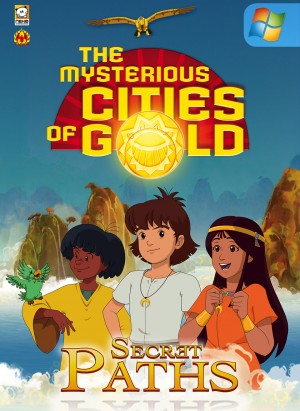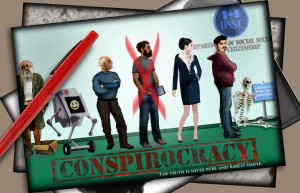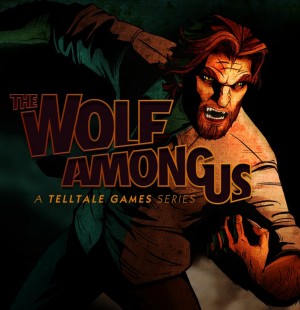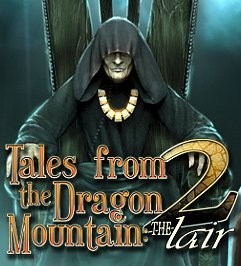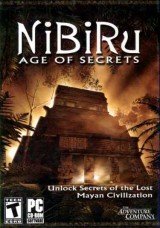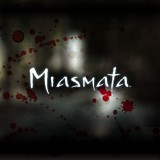Review for Shadows on the Vatican: Act II - Wrath
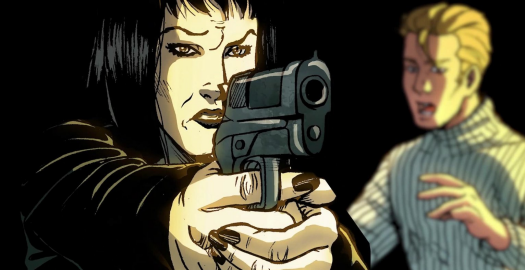
I had high expectations for the second part of the intense politico-religious series Shadows on the Vatican. The introductory Act I: Greed did well to establish the main cast, the somber atmosphere, and the complex, controversial plot inspired by David Yallop's non-fiction book In God's Name, which puts a conspiratorial spin on the death of Pope John Paul I in 1978. Act II: Wrath resumes right where its predecessor left off – in ex-priest James Murphy’s apartment in Rome, with a fresh corpse on the floor and feisty mercenary Silvia in charge. The next five hours are solid entertainment, well worth the two-year wait between episodes. The simplicity of the neat, pleasant backdrops and streamlined gameplay mechanics is the perfect foil for the multilayered characters; the puzzles are well-designed and thought-provoking but not obscure; the insidious plot twists tighter as it is unraveled. Character animation is the only aspect that lacks finesse, but that’s a nitpick in a game that packs so much substance in an episode, ending once more at a crucial juncture while leaving you fully satisfied with the progress so far.
The episode starts with a quick recap of Act I, using the series’ characteristic comic book-style panels to remind players of Fr. Dellerio’s murder in 1996, which led to his protégé James cynically leaving the Church; the near-fatal assault on Fr. Cristoforo, on whose insistence James had returned to Rome; and the events culminating in the violent encounter with Silvia. The game then focuses on James and Silvia working through a web of henchmen and smokescreens to get to the heart of a conspiracy of power and corruption. The stakes are sky-high: the money laundering suspected in Act I, involving the secrecy-enshrouded IOR – aka the Vatican Bank – appears only to be the tip of the proverbial iceberg, and the question shifts from what to why and how as the case progresses. It’s not an easy subject to grasp, as much due to the financial intricacies as the extensive histories of organisations like the Vatican and the Freemasons. But the game works hard to simplify the topics for laypersons, going so far as to provide descriptive slides of important people and places. It’s also judicious about the flow of information and action, allowing you to absorb one set of developments and implications before moving on to the next – without easing up on the underlying sense of urgency.
Splattered with profanities and dead bodies, Act II tackles the entire gamut of human emotion, be it lascivious perversion or sweet romance, unrepentant selfishness or selfless devotion. Every person, irrespective of origin or profession, has generous shades of gray. Gangsters are capable of surprising tenderness; priests of equal cruelty. No one is incorruptible, and no one beyond redemption. This keeps the twists in the tale unpredictable even during the obvious good-versus-evil conflicts. The conspiracy, a compelling blend of facts and myths, is blasphemous enough to shake even the hardened sentiments of embittered James. On the surface, we experience the duality of Rome with visits to the historic Santa Brigida church and the impressive IOR in the Vatican, as well as more contemporary places like the Galleria Alberto Sordi, a fancy shopping arcade, and a beauty salon. But lest we get comfortable with the pleasant, these trips are interspersed with forays into the vicious Roman underworld, where death is usually the only exit.
One of the biggest pluses of this series is the ease of its mechanics, and barring a minor experiment at the start of Act II, they are the same here as they were previously. In the first conversation between James and Silvia, you have to correctly infer the answer to each query of the dialogue tree or get reset to the start of the chat. This exchange wasn’t long enough to frustrate, but the format might have if applied to the full game. A similar process is used in Silvia’s first solo task as well, part of which is timed. The fear of repeating a sequence of events from scratch does make you consider your moves more seriously, but getting bogged down in redoing tasks over and over is a scarier prospect. Fortunately, the trials were concluded promptly, and then it was business as usual.
Progress is linear and task-based, and though there are several distinct locations, usually only a screen or two with three or four hotspots each can be explored at a time. Some hotspots which are initially dismissed as irrelevant become useful later, so it’s vital to revisit all available hotspots (revealed by a click of the spacebar) if you are stuck. There are no hints, but conversations hold fairly clear feedback to resolve situations. James still ‘drives’ to some places using the picturesque map of Rome, but mostly the story advances itself from scene to scene. Though James does jot down important symbols in a notepad, given the volume of dense information provided, a diary to record his observations is still sorely missed.
Most quests involve matching objects in the inventory, revealed by scrolling the mouse over the top of the screen. Sometimes if more than two items are to be combined, there is a set order. Though James often carries around twenty objects, including many books and documents, most combinations are practical and are further simplified by non-matches being visually disallowed. Silvia usually carries only her weapons. Both protagonists get significant individual playtimes, but in scenes that feature them together, you can choose your protagonist according to the situation. This tandem play, especially in a life-and-death crisis towards the end, is not only entertaining but makes the unlikely allies equal stakeholders in their successes. There are also some clever ciphers to crack, a few logical deductions from documentary evidence, and a nice sound-based minigame.
The game changer in Act II is Silvia. Hired to assassinate James, her spur-of-the-moment decision to spare his life has now put her on the same hit list. Though this gives them the motive to work together, their modus operandi – he prefers to talk things out, she’d rather shoot – is a matter of grave conflict between them. A career criminal, Silvia is smart, audacious, and deathly serious about her business. While she is openly indulgent towards James and affectionately calls him ‘priest’ (though he isn’t one anymore), she rebuts his entreaties to alter her path with icy cynicism. Tragically self-aware, she’s an exemplary anti-hero and walks the line between good and evil with immaculate grace: sweet one moment, bitchy the next, fatal the one after. Despite the vast chasm in their value systems, James is attracted to her, and the way he gets uncharacteristically anxious when she’s endangered – either unwittingly or of her own volition – is endearing. It seems as if a romance is in the cards, but despite the obvious warmth and inexplicable trust between them, it will be interesting to see if they can find genuine common ground when not forced together under extreme duress.
Series regulars Mario the barkeep and Sister Candida the lush lighten the grim proceedings. Nursing a hangover since Act I, the cranky nun is particularly amusing, and has the rare ability to make the otherwise ultra-serious James indulge in assorted boyish mischief. Super Mario continues to be of service as a source of helpful hints and quest items, and the sinister Cardinal Brehmen stops by to stress James out even more. Among the guest acts, mini-villain Marchese, the manager of a dubious nightclub, does well to keep a role burdened with the brash bluster of a seasoned gangster from devolving into a parody. Several other stereotypes are also encountered: vapid moll Marika, her even more vapid assistant Claudio, some belligerent cops, a sleazy journalist and a cheat fortune-teller, but again, the tight script keeps them from becoming annoyances.
The high resolution graphics have been further enhanced this time, which really makes the screens pop with brightness and clarity. Besides the now-familiar haunts, we get some new locations – both real, like the Galleria and the IOR, and fictional, like the nightclub, the salon, a crypt, and an auditorium. The landmarks are commendable for their accurate representation, and the auditorium’s top-down perspective endows it with a sense of grandeur. The colours are rich but sober, and the sky is still tinted a stormy red. Daniela di Matteo’s stylishly sketched, edgily edited comic book-style cutscenes continue to progress the story, and Mario’s television now has some more channels – though it is usually tuned to soccer. Character animation is still not perfect, however, especially people’s gaits, and quite a bit of Silvia’s activities are either blacked out or shown via cutscenes. On the other hand, James is given a wider range of actions, and can now talk realistically on the cellphone and even mix drinks. People walk slowly, but exits can be double-clicked to transition to other available areas.
Like its predecessor, Act II also has near-flawless localisation from the native Italian, barring one or two untranslated names. Conversations flow naturally with colloquial phrases, and are rife with incisive repartees from the aggressive cast of characters. The harshness of the story and its people isn’t sugarcoated; even James’s sanctimony – which would usually be considered a ‘good’ trait – is treated with realistic disdain by his enemies as well as benefactors. It’s not all doom and gloom, though. There’s quite a bit of humour as well, with snarky Silvia getting the best lines, though Sister Candida does get several words in edgewise. Much snickering ensues at the expense of James’s pinstriped turtleneck sweater (making me feel almost guilty for criticizing it in my review of Act I).
Act II also has very competent voice acting. Though slightly awkward at the start, James quickly finds his rhythm; chatterbox Mario is more tempered and consequently much more enjoyable this time, and Sister Candida is a gem. The guest cast performs well in their limited roles, and both villains – Marchese and Massimino – are humanised by nuanced dialogue delivery. But the big surprise is Silvia. Her intro in Act I was marred by lacklustre voice acting, but this time she is an absolute delight, conveying a multitude of emotions with perfect intonations for every comment, and keeping the sass in check with just the right amount of sarcasm. While the spoken dialogues mirror the written text, the lip-syncing isn’t as efficient. People often keep talking even after dialogues are over, but the screen design – conversations appear in speech bubbles in the foreground while the characters talk in the background – reduces the negative impact of this issue. The orchestral soundtrack is understated but matches the mood of each scene, and subtle sound effects, like voices echoing inside cavernous places, add realism. The credits roll to the series’ haunting theme track, titled ‘Shadows’.
Co-produced by 10th Art Studio and Adventure Productions, Act II: Wrath keeps you entertained for most of its five-hour duration despite the exposition-heavy nature of its complex premise. It capitalises on the detailed introduction to the story, characters and scenario provided in Act I to cut straight to the chase, and sweeps you into the conspiracy with a host of easy but interesting puzzles. Though the linear adventure doesn’t boast a large arena to cavort in, it earns props for making the most of its limited resources by doing everything with finesse rather than shooting for unrealistic glory. The smooth gameplay and solid production quality greatly enhances the playing experience, and special appreciation is due to the tandem play between James and Silvia. Both are worthy protagonists – intelligent, mature and practical in their own ways – and their subtle but undeniable chemistry shines past the blatant conflicts. Though the Big Bad is still a fuzzy concept on the red-tinted horizon, brazen lesser evils keep the tension taut in this episode, which ties up many of the loose ends of the first two chapters and leaves you craving the next. It takes a bit of effort to delve into the politico-religious conspiracy of Shadows on the Vatican, but if you invest the interest, the payoff so far is morbidly fascinating.


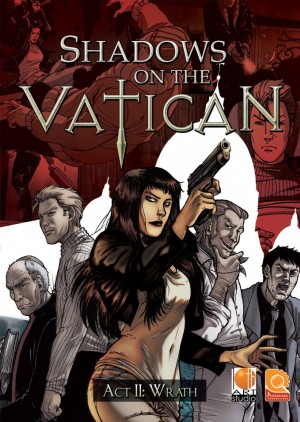
_capsule_fog__medium.png)




